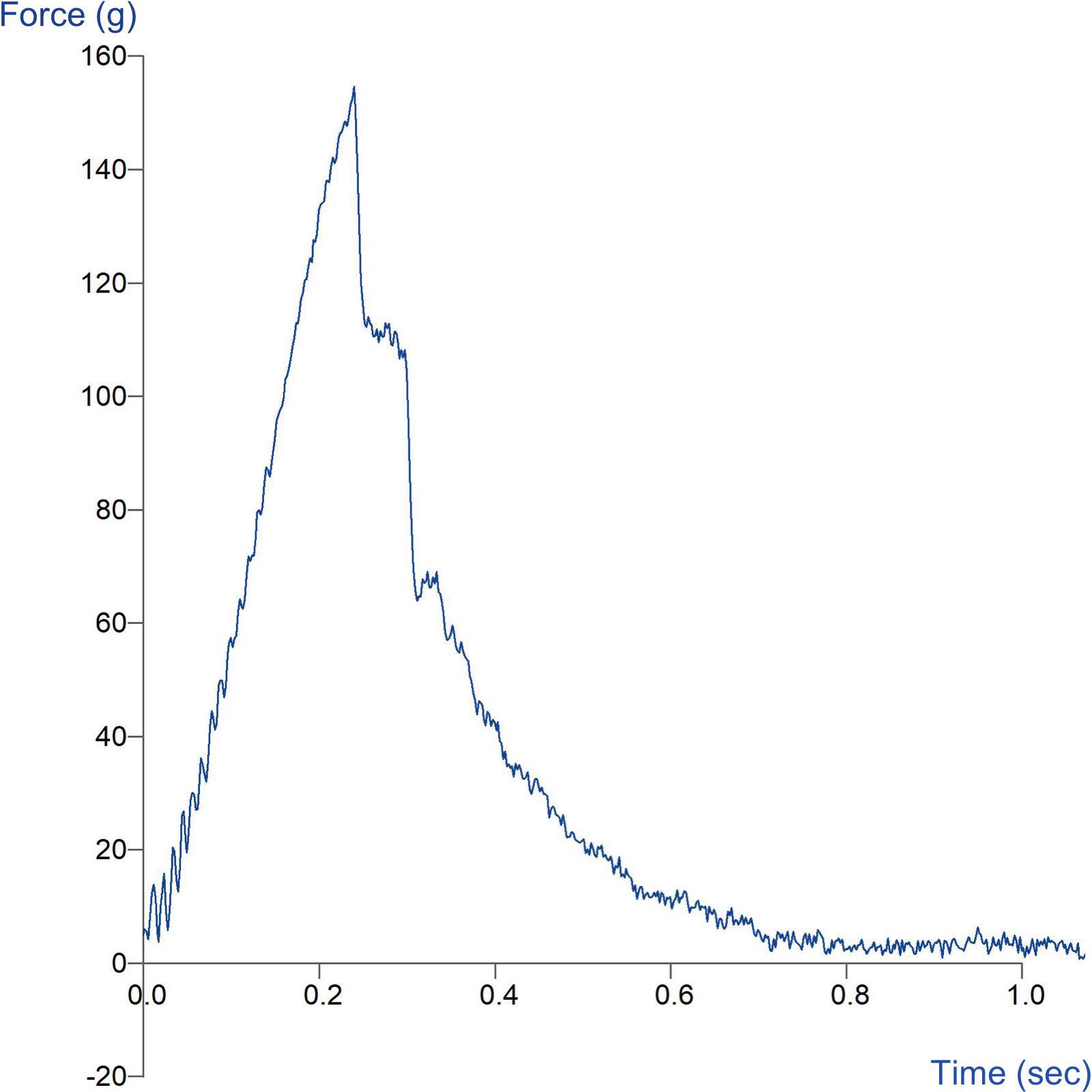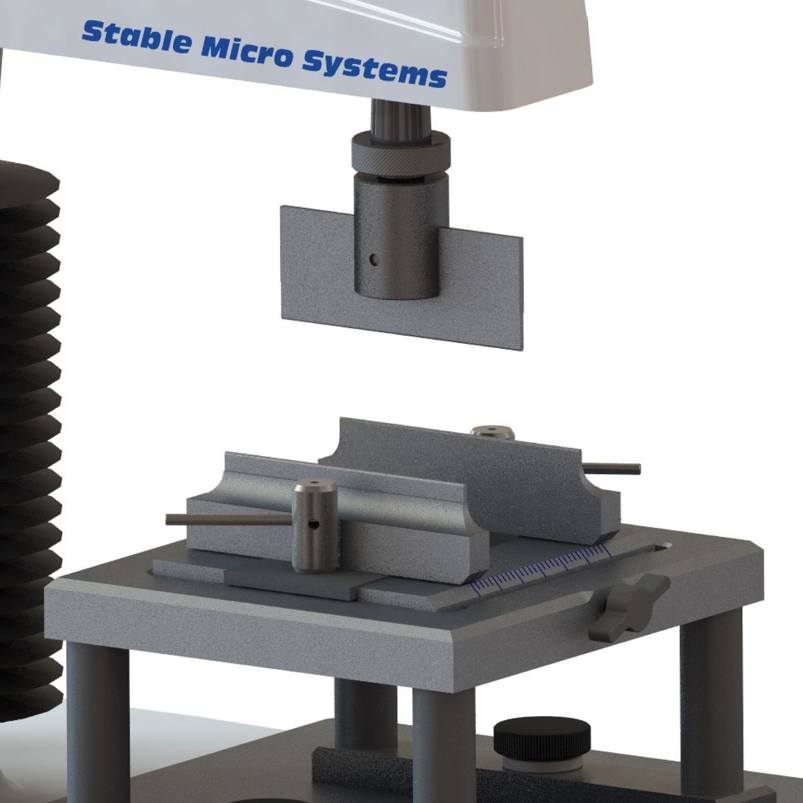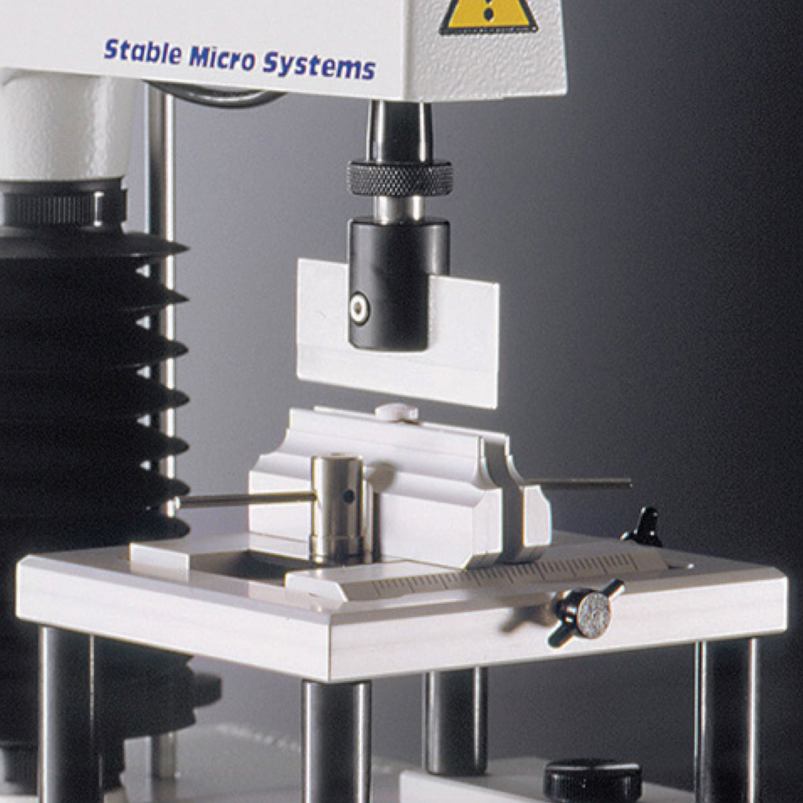Product overview
The mechanical properties of new formulations in tablet form can be obtained from the three-point bend test using the Miniature Three Point Bend Rig. Properties such as the Young’s Modulus and the tensile strength of the sample can be inferred by the use of suitable formulae. These properties govern the eventual strength of the tablet and are a function of the amount of compressive force used whilst making the tablet or specimen.
Tablets are able to fit within the span of the Miniature Three Point Bend Rig, but there are advantages to using a cuboidal die to form beam specimens for the purpose of testing, particularly as fundamental materials parameters are simpler to calculate using purpose-designed test geometries.
Ideally suited to small diameter samples such as tablets. Sample supports can provide a 2mm separation.
How does the Miniature Three Point Bend Rig work?
Typical graph

Technical information
Ideal sample form
Small solid samples.
Benefits and limitations
- Supports 2mm wide therefore enables small samples to be tested.
- Recommended minimum test distance between supports 5mm.
- Support length 90mm.
Installation
Full installation instructions are provided within the Education Zone of the latest Exponent/Connect software version and on the technical information sheet accompanying this product.
Chemical compatibility
Stable Micro Systems probes and attachments are commonly made from four materials: anodised aluminium (AA6082 T6), stainless steel (316 T), Delrin (acetyl copolymer) and Perspex (polycarbonate).
In general use, probes and attachments made from these materials will be suitable for testing food products and inert non-food materials.
The four materials listed above are not universally resistant to all types of chemicals and as such the compatibility of the probe/attachment material with the product (to be tested) must be established to prevent damage to the probes and attachments. If the compatibility of the product with the probe is unknown to the customer then the chemical information about the product (Material Safety Data Sheet or Product Data Sheet) should be submitted to Stable Micro Systems. Stable Micro Systems will then assess the suitability of the probe/attachment material for use with the product and advise accordingly. If this advice is not sought then Stable Micro Systems will not accept liability for probes/attachments damaged by chemical attack from the product being tested.
Cleaning and maintenance
All probes and attachments may be cleaned in warm (or hand hot) water using a mild detergent. A soft brush may be used but abrasive cleaning aids should be avoided. Stable Micro Systems products should not be microwaved or cleaned in a dishwasher.
Screw threads should be lightly lubricated after drying using a light lubricant, e.g. petroleum jelly, mineral oil. This will aid the fitting and unscrewing of the item. Each component of a probe or attachment should be wrapped separately when stored, to avoid scratching or chipping. This will safeguard against any unnecessary damage to the accessory.


